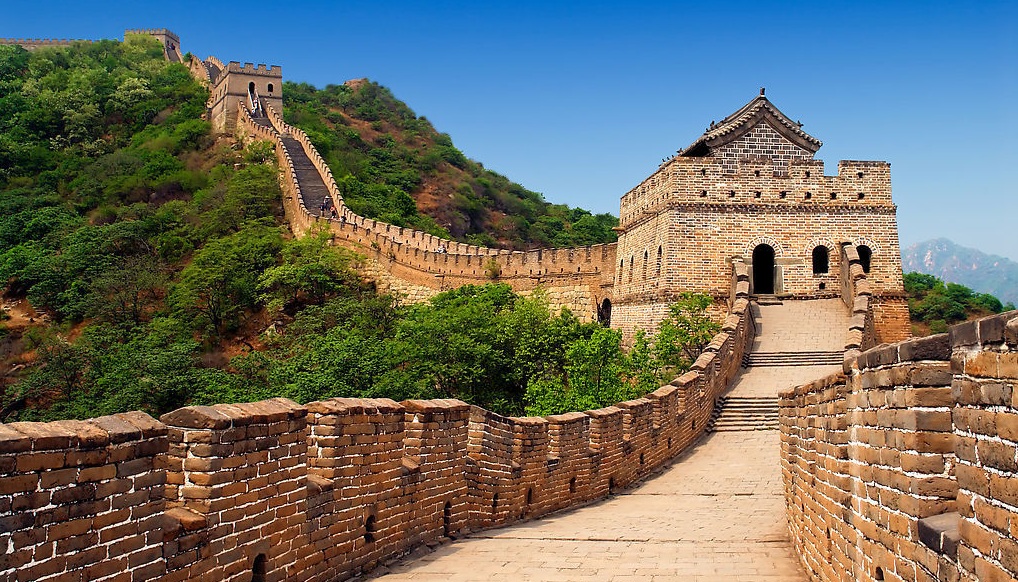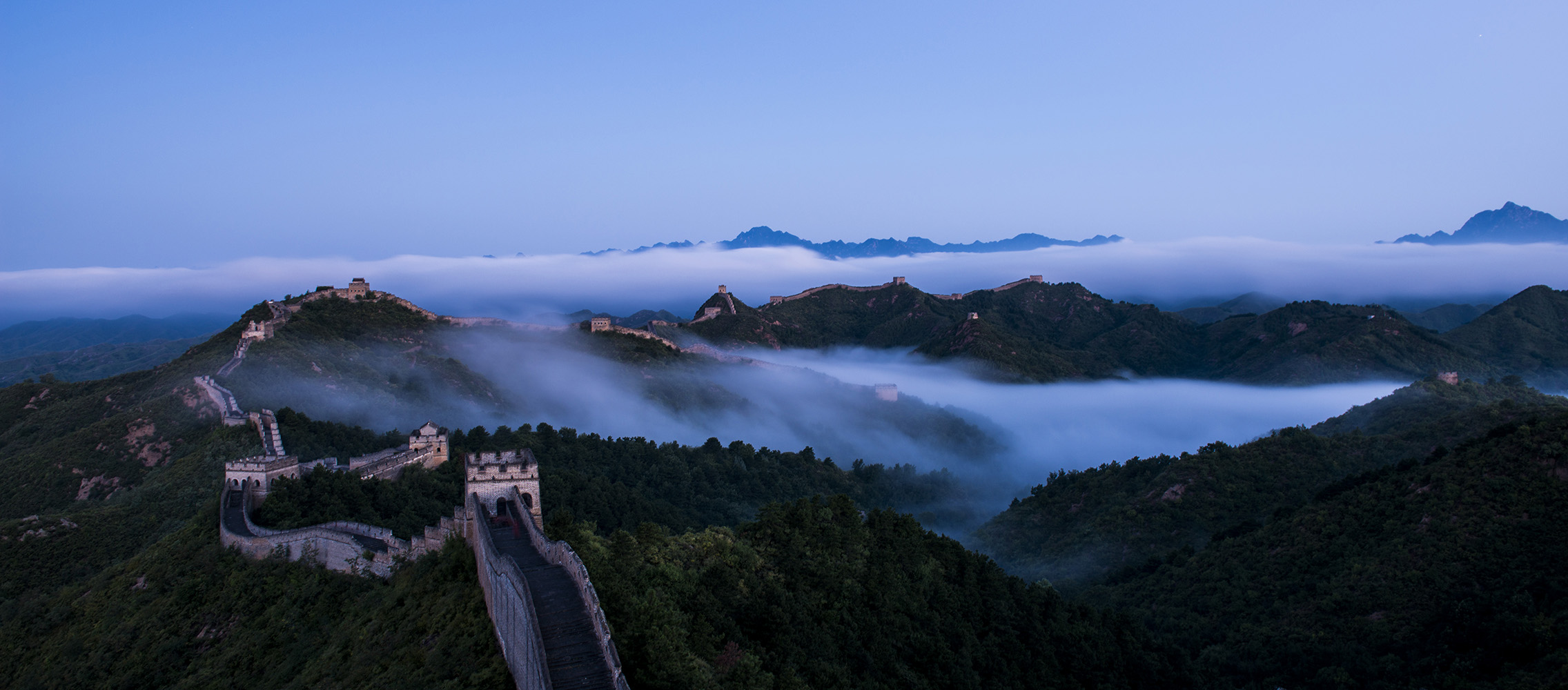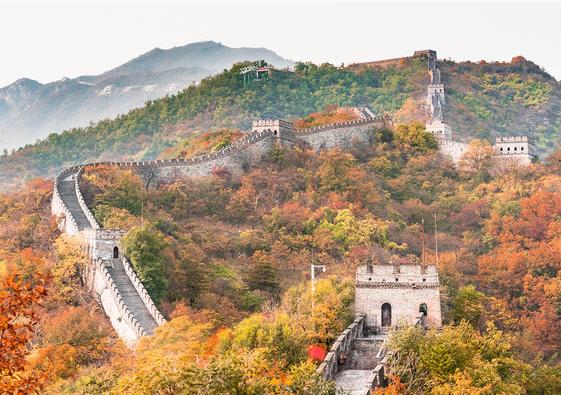24 Hours Hotline: +86 137-3541-1378
Email:[email protected]
24 Hours Hotline: +86 137-3541-1378
Email:[email protected]

Introdution of The Great Wall
The
Great Wall spans more than two thousand years and traverses 5,000
kilometers. The Great Wall, like the Pyramids of Egypt, the Taj Mahal in
India and the Hanging Garden of Babylon, is one of the great wonders of
the world.
Starting out in the east
on the banks of the Yalu River in Liaoning Province, the Wall stretches
westwards for 12,700 kilometers to Jiayuguan in the Gobi desert, thus
known as the Ten Thousand Li Wall in China. As a cultural heritage, the
Wall belongs not only to China but to the world. The Venice charter
says: "Historical and cultural architecture not only includes the
individual architectural works, but also the urban or rural environment
that witnessed certain civilizations, significant social developments or
historical events." The Great Wall is the largest of such historical
and cultural architecture, and that is why it continues to be so
attractive to people all over the world. In 1987, the Wall was listed by
UNESCO as a world cultural heritage site.

History
During
the time known as The Warring States Period (476-221 BCE), the
different regions of China fought for control of the country during the
collapse of the Eastern Zhou Dynasty (771-226 BCE). One state emerged
victorious from this struggle: the state of Qin which is pronounced
'chin' and gives China its name. The general who led Qin to victory was
Prince Ying Zheng who took the name `Qin Shi Huangti' (First Emperor)
after conquering the other states.
Shi
Huangti ordered construction of the Great Wall to consolidate his
empire. The seven warring states each had walls along their border for
defense, which Shi Huangti destroyed after he took power. As a sign that
all of China was now one, the emperor decreed a great wall would be
built along the northern border to defend against the mounted warriors
of the nomadic Xiongnu of Mongolia; there would be no more walls marking
boundaries between separate states in China because there would no
longer be any separate states. His wall ran along a line further to the
north than the present one, marking what was then the border between
China and the Mongolian plains. The wall was constructed by unwilling
conscripts and convicts who were sent north under guard from all over
China for the purpose. Shi Huangti was not a benevolent ruler and was
more interested in his own grandeur than the good of his people. His
wall was not regarded by the Chinese people under the Qin Dynasty as a
symbol of national pride or unity but as a place where people were sent
to labor for the emperor until they died.
The
present wall, whose image is so well known, is not Shi Huangti's wall
from c. 221 BCE. There is actually very little of the original wall left
today. When the Qin Dynasty fell in 206 BCE, the country split into the
civil war known as the Chou-Han Contention, fought between the generals
Xiang-Yu of Chou and Liu-Bang of Han, the two leaders who had emerged
as the most powerful of those who had helped topple the Qin Dynasty.
When Liu-Bang defeated Xiang-Yu in 202 BCE at the Battle of Gaixia, he
became the First Emperor of the Han Dynasty and continued construction
of the wall as a means of defense. He was also the first emperor to use
the wall as a means of regulating trade along the Silk Routes (better
known as The Silk Road) from Europe to China.

Design Of The Fortifications
The Great Wall had three major components: passes, signal towers (beacons), and walls.
Passes
Passes
were major strongholds along the wall, usually located at such key
positions as intersections with trade routes. The ramparts of many
passes were faced with huge bricks and stones, with dirt and crushed
stones as filler. The bastions measured some 30 feet (10 metres) high
and 13 to 16 feet (4 to 5 metres) wide at the top. Within each pass were
access ramps for horses and ladders for soldiers. The outside parapet
was crenellated, and the inside parapet, or yuqiang (nüqiang), was a low
wall about 3 feet (1 metre) high that prevented people and horses from
falling off the top. In addition to serving as an access point for
merchants and other civilians, the gate within the pass was used as an
exit for the garrison to counterattack raiders or to send out patrols.
Under the gate arch there was typically a huge double door of wood.
Bolts and locker rings were set in the inner panel of each door. On top
of each gate was a gate tower that served as a watchtower and command
post. Usually it stood one to three stories (levels) high and was
constructed either of wood or of bricks and wood. Built outside the
gate, where an enemy was most likely to attack, was a wengcheng, a
semicircular or polygonal parapet that shielded the gate from direct
assault. Extending beyond the most strategic wengchengs was an
additional line of protection, the luocheng, which was often topped by a
tower used to watch those beyond the wall and to direct troop movements
in battles waged there. Around the gate entrance there was often a moat
that was formed in the process of digging earth to build the
fortifications.
Signal towers
Signal
towers were also called beacons, beacon terraces, smoke mounds, mounds,
or kiosks. They were used to send military communications: beacon
(fires or lanterns) during the night or smoke signals in the daytime;
other methods such as raising banners, beating clappers, or firing guns
were also used. Signal towers, often built on hilltops for maximum
visibility, were self-contained high platforms or towers. The lower
levels contained rooms for soldiers, as well as stables, sheepfolds, and
storage areas.

Walls
The
wall itself was the key part of the defensive system. It usually stood
21.3 feet (6.5 metres) wide at the base and 19 feet (5.8 metres) at the
top, with an average height of 23 to 26 feet (7 to 8 metres), or a bit
lower on steep hills. The structure of the wall varied from place to
place, depending on the availability of building materials. Walls were
made of tamped earth sandwiched between wooden boards, adobe bricks, a
brick and stone mixture, rocks, or pilings and planks. Some sections
made use of existing river dikes; others used rugged mountain terrain
such as cliffs and gorges to take the place of man-made structures.
In
the western deserts the walls were often simple structures of rammed
earth and adobe; many eastern ramparts, such as those near Badaling,
were faced with stone and included a number of secondary structures and
devices. On the inner side of such walls, placed at small intervals,
were arched doors called juan, which were made of bricks or stones.
Inside each juan were stone or brick steps leading to the top of the
battlement. On the top, on the side facing outward, stood 7-foot-
(2-metre-) high crenels called duokou. On the upper part of the duokou
were large openings used to watch and shoot at attackers, and on the
lower part were small openings, or loopholes, through which defenders
could also shoot. At intervals of about 650 to 1,000 feet (200 to 300
metres) there was a crenellated platform rising slightly above the top
of the wall and protruding from the side that faced attackers. During
battle the platform provided a commanding view and made it possible to
shoot attackers from the side as they attempted to scale the wall with
ladders. On several platforms were simply structured huts called pufang,
which provided shelter for the guards during storms. Some platforms, as
with signal towers, had two or three stories and could be used to store
weapons and ammunition. Those at Badaling commonly had two stories,
with accommodations for more than 10 soldiers on the lower level. There
were also drainage ditches on the walls to shield them from damage by
excessive rainwater.
Tradition And Conservation
The
Great Wall has long been incorporated into Chinese mythology and
popular symbolism, and in the 20th century it came to be regarded as a
national symbol. Above the East Gate (Dongmen) at Shanhai Pass is an
inscription attributed to the medieval historian Xiao Xian, which is
translated as “First Pass Under Heaven,” referring to the traditional
division between Chinese civilization and the barbarian lands to the
north.
Prev: Li River
Next: Forbidden City
Wechat: Chinaprivatetour
24 Hours Hotline:
+86 137-3541-1378
* Authentic Experiences: Genuine local experiences that immerse you in the true essence of Beijing and beyond.
* Safety First: Highest safety standards with secure activities and reliable transportation.
* Customizable Tours: Flexible itineraries tailored to your interests and needs.
* Local Expertise: In-depth knowledge of Beijing and China, offering exclusive insights.
* Professional Guides: Licensed bilingual guides with over 5 years of experience.
* Comfortable Travel: Experienced drivers and well-maintained vehicles for a smooth journey.
* Sustainable Tourism: Commitment to responsible tourism and supporting local communities.
* Customer-Focused: Personalized service and continuous improvement based on your feedback.
* Free Cancellation: Cancel up to 24 hours before travel for flexibility and peace of mind.
* 24/7 Support: Round-the-clock assistance for any questions or help needed.
1 to 1 tailor-made service from our professional travel advisors for the most sophisticated
Constantly excellent reviews for attraction, hotel and service Competitive price
Local experts provide quality tours Best selected knowledgeable local guides Authentic local restaurants
7*24 hours available to create you a worry-free tour. No Hidden Fees and absolutely no pressure to buy. Secured









Copyright © 2017 Chinabeijingprivatetour.com All rights reserved. 浙ICP备18056007号-2